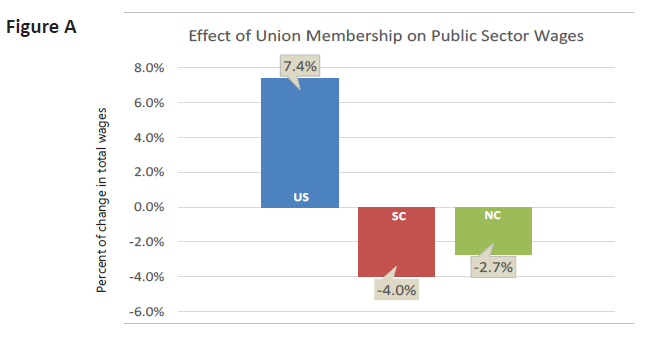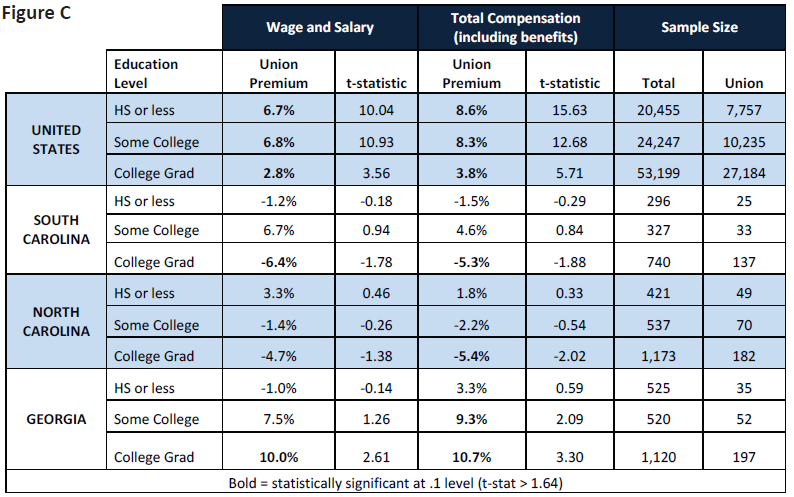Membership in SC’s Public Sector “Unions” – Boon or Bust?

Editor
Despite their declining membership rolls, public sector unions ostensibly attract members by touting unions’ collective bargaining abilities to promote higher pay, improve benefits, and increase job security.
But that’s not the case in the Palmetto State.
Economists at Miami University (OH) and Trinity University used data from the U.S. Census Bureau and other sources to conduct a study of South Carolina public employees for the Palmetto Policy Forum.1 Their analysis found that unionized public sector employees in the state earn 4% less in total compensation than their non-union public sector counterparts. Translation: Unionized government workers in South Carolina are actually being penalized for paying union dues.
The following chart (Figure A) shows how union membership affects total compensation in the United States,South Carolina and North Carolina.

The full statistical analysis on the reverse side of this page shows the penalty is even greater for college-educated public workers, who take a 5.3% total compensation penalty for working under a union-negotiated collective bargaining agreement, and a 6.4% penalty when only considering their wages and salary (excluding benefits).This penalty is of a similar level in the Tarheel State, where college-educated unionized public workers are collecting 4.7% less than their non-union counterparts. In their study, the economists also controlled for work experience, type of occupation, hours worked, other income, and demographics.2
Public workers operating under a union-negotiated contract in South Carolina are hit twice by the unions claiming to represent them: First by paying to join the union, then again with overall lower compensation. So if the unions are unable to back up their claims of better pay and benefits, this begs the question: What exactly are South Carolina’s public sector unions doing with their members’ dues?
Figure B shows the “Union Premium” for the United States, South Carolina and our neighboring states of North Carolina and Georgia. The United States and Georgia follow the typical pattern: public union membership means a “premium,” slightly more in Wages & Salary and Total Compensation. This is not true for South Carolina or North Carolina. Sample sizes are small, but “t” tests show a robust statistical connection between lower Wages and Total Compensation and public sector union membership.

Figure C digs deeper into the union question based on the demographic of Education Level. Again, the South Carolina reality turns conventional wisdom on its head. Those who attain a college degree (College Grad) are penalized to a more signifi cant degree for their union membership than less educated employees (Some College or High School or less).

1.William Even, Raymond E. Glos Professor of Economics, Miami University (OH) and David Macpherson, E.M. Stephens Professor of Economics, Trinity University.
2.Demographics include sex, race, marital status, and urban/rural residence. The economists note that these controls match those used in several other studies of the union differential in compensation.





